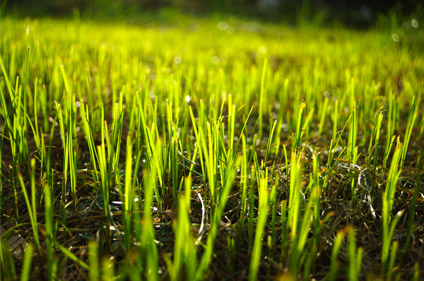Potash plays a role in many cellular functions primarily as an activator to many enzymes. These enzymes are critical to sugar translocation, energy transfer, and other processes. Without sufficient potash, these processes would slow or cease activity, leaving the plant in a weakened state. Potash is also responsible for maintaining cell turgor or rigidity and internal water management.
Deficiencies in potassium can also reduce stomatal closure which increases water loss and minimizes the plant’s ability to withstand drought conditions. Simply put, turf with proper K fertilization will be more resilient to wear and more tolerant to cold, drought, and other environmental stressors.
Potassium loss in soils happens due to leaching particularly on sandy or coarser soils. Clipping removal also represents a large loss of K and should be considered as a factor of how much should be applied per year. Turfgrass species and property use will also be considerations in terms of potassium requirements. Athletic fields, golf courses, and areas of high traffic will certainly benefit from more routine and higher application rates.
When considering potassium fertilization, be aware of both timing and potassium source (found on the label in the "derived from" statement). Typically, granular fertilizers will have potassium in one of two sources, either muriate of potash (MOP or KCl) or sulfate of potash (SOP or K₂SO₄).
This is important to note because each source has a different salt index. A higher salt index means that there is a greater potential for turf burn particularly during hot weather patterns. The salt index for SOP is 42.6 whereas MOP is 116.2 making high rates of MOP something that should be avoided during summer heat.
Other and lesser used sources of K include potassium magnesium sulfate better known as SulPoMag and potassium nitrate called PotNit. SulPoMag is commonly used when a soil test indicates that there is a deficiency in both potassium and magnesium. Again, make sure to use the soil analysis to guide the necessity.
Like most other granular applications, calibrate the spreader, blow particles from hard surfaces, and water the product in promptly after application.
For a basic turf fertilization guide for cool season grasses, review this PennState Extension article.
For a Texas / warm season guide, review this article from the Texas A&M AgriLife Extension.
Please reach out to the Ewing Technical Services Team if there are any questions.




